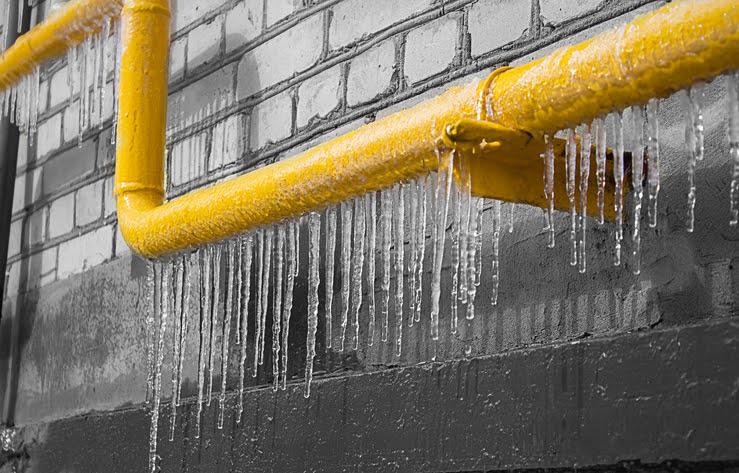Tips to Defend Plumbing System from Cold Weather: Critical Strategies
Tips to Defend Plumbing System from Cold Weather: Critical Strategies
Blog Article
How do you actually feel with regards to Prevent Frozen Pipes ?

Winter can ruin your pipes, particularly by freezing pipes. Right here's just how to avoid it from occurring and what to do if it does.
Intro
As temperatures decline, the danger of icy pipelines boosts, possibly leading to costly repair work and water damage. Comprehending exactly how to stop icy pipelines is vital for home owners in cool environments.
Comprehending Frozen Pipes
What causes pipelines to ice up?
Pipes ice up when revealed to temperature levels below 32 ° F (0 ° C) for extended durations. As water inside the pipelines freezes, it increases, taxing the pipe wall surfaces and potentially causing them to break.
Risks and problems
Frozen pipelines can cause water system disruptions, residential or commercial property damages, and costly fixings. Burst pipelines can flooding homes and cause considerable structural damage.
Indicators of Frozen Pipeline
Recognizing icy pipes early can stop them from bursting.
How to recognize frozen pipelines
Search for lowered water circulation from faucets, uncommon smells or noises from pipelines, and noticeable frost on exposed pipes.
Avoidance Tips
Protecting at risk pipelines
Wrap pipelines in insulation sleeves or utilize heat tape to safeguard them from freezing temperature levels. Focus on pipelines in unheated or exterior locations of the home.
Heating techniques
Maintain indoor spaces sufficiently heated, especially locations with plumbing. Open cabinet doors to enable warm air to flow around pipelines under sinks.
Safeguarding Outdoor Plumbing
Yard pipes and exterior faucets
Separate and drain yard tubes before winter season. Mount frost-proof spigots or cover exterior faucets with protected caps.
What to Do If Your Pipes Freeze
Immediate activities to take
If you believe frozen pipes, keep faucets open to eliminate pressure as the ice thaws. Use a hairdryer or towels taken in warm water to thaw pipelines gradually.
Long-Term Solutions
Architectural modifications
Consider rerouting pipes far from outside wall surfaces or unheated areas. Add additional insulation to attic rooms, cellars, and crawl spaces.
Upgrading insulation
Invest in top notch insulation for pipelines, attics, and wall surfaces. Correct insulation aids preserve consistent temperature levels and decreases the danger of frozen pipelines.
Conclusion
Protecting against frozen pipes calls for proactive actions and fast actions. By understanding the reasons, indications, and safety nets, property owners can safeguard their pipes during cold weather.
5 Ways to Prevent Frozen Pipes
Drain Outdoor Faucets and Disconnect Hoses
First, close the shut-off valve that controls the flow of water in the pipe to your outdoor faucet. Then, head outside to disconnect and drain your hose and open the outdoor faucet to allow the water to completely drain out of the line. Turn off the faucet when done. Finally, head back to the shut-off valve and drain the remaining water inside the pipe into a bucket or container. Additionally, if you have a home irrigation system, you should consider hiring an expert to clear the system of water each year.
Insulate Pipes
One of the best and most cost-effective methods for preventing frozen water pipes is to wrap your pipes with insulation. This is especially important for areas in your home that aren’t exposed to heat, such as an attic. We suggest using foam sleeves, which can typically be found at your local hardware store.
Keep Heat Running at 65
Your pipes are located inside your walls, and the temperature there is much colder than the rest of the house. To prevent your pipes from freezing, The Insurance Information Institute suggests that you keep your home heated to at least 65 degrees, even when traveling. You may want to invest in smart devices that can keep an eye on the temperature in your home while you’re away.
Leave Water Dripping
Moving water — even a small trickle — can prevent ice from forming inside your pipes. When freezing temps are imminent, start a drip of water from all faucets that serve exposed pipes. Leaving a few faucets running will also help relieve pressure inside the pipes and help prevent a rupture if the water inside freezes.
Open Cupboard Doors
Warm your kitchen and bathroom pipes by opening cupboards and vanities. You should also leave your interior doors ajar to help warm air circulate evenly throughout your home.

As a person who reads about Winter Plumbing Precautions: Preventing Frozen Pipes, I thought sharing that excerpt was beneficial. For those who appreciated our blog post please don't forget to pass it around. Bless you for your time. Please visit our site back soon.
Click Report this page